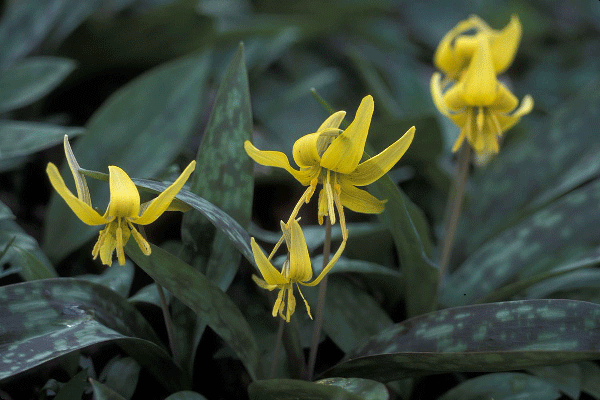The yellow trout lily or dogtooth violet, Erythronium americanum, is a regionally native perennial corm that plays an important role in pollinator health. The common name dogtooth violet often makes people think that this plant is a weed, however, this is not the case.
Woodland Native
Dogtooth violet belongs to the Lilaceae family and does exceptionally well in part shade locations. Native to woodland habitats allow dogtooth violet to take advantage of sunlight that reaches the forest floor during the spring when trees have yet to leaf out. As tree canopies fill in the plant will go dormant by late spring or early summer. Like many of our spring flowering bulbs it needs to be planted in the fall and planted in groups of three or more.

Description
The dogtooth violet grows about 6” tall. The plant, when mature, will produce two leaves about 6” long that are a mottled green or greenish brown. Mature plants will produce one yellow flower that is considered perfect (both male and female parts) that last for a few short days.
Patience Required
This is a plant for the patient gardener. It can take several years for the corms to develop into mature flowering size. With time this plant can spread and slowly naturalize creating a dramatic spring flowering show that not only benefits the landscape but also early emerging pollinators. The wait is well worth it.
Spring Food Source for Pollinators
Mason bees, bumblebees, Andreind bees benefit from the early flowering habit of dogtooth violet. One species, Andrena erythronii is specialist that will only visit plants in the Erythronium genus that includes prairie trout lily, E. mesochoreum, and white trout lily, E. albidum. With so many spring flowering bulbs to choose from consider incorporating the dogtooth violet into your garden. It’s slow growing but the benefits well worth the wait.

